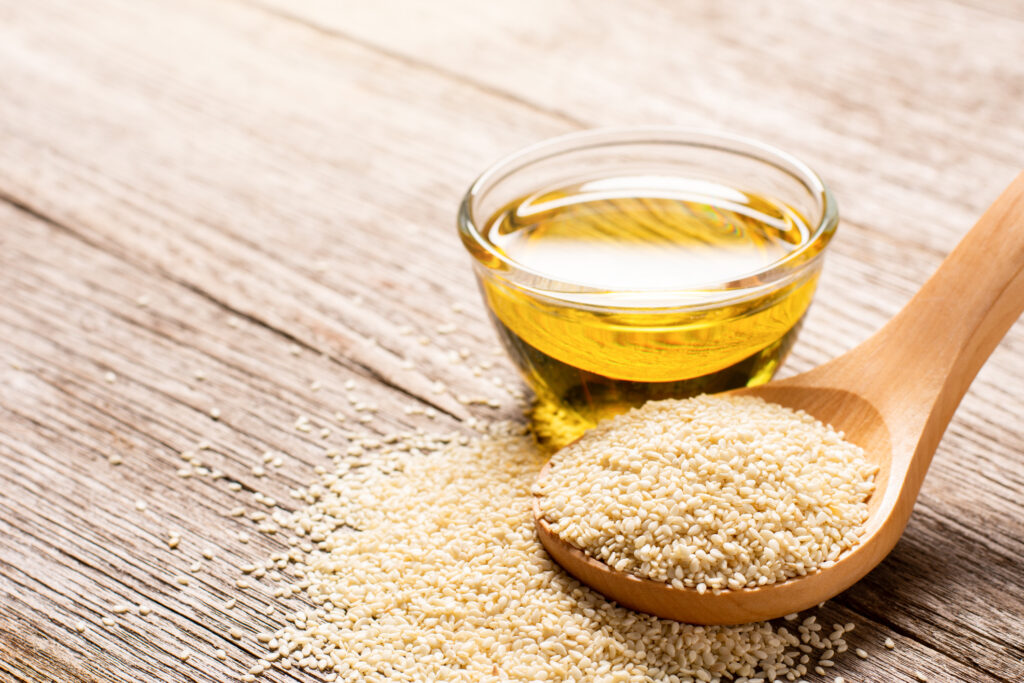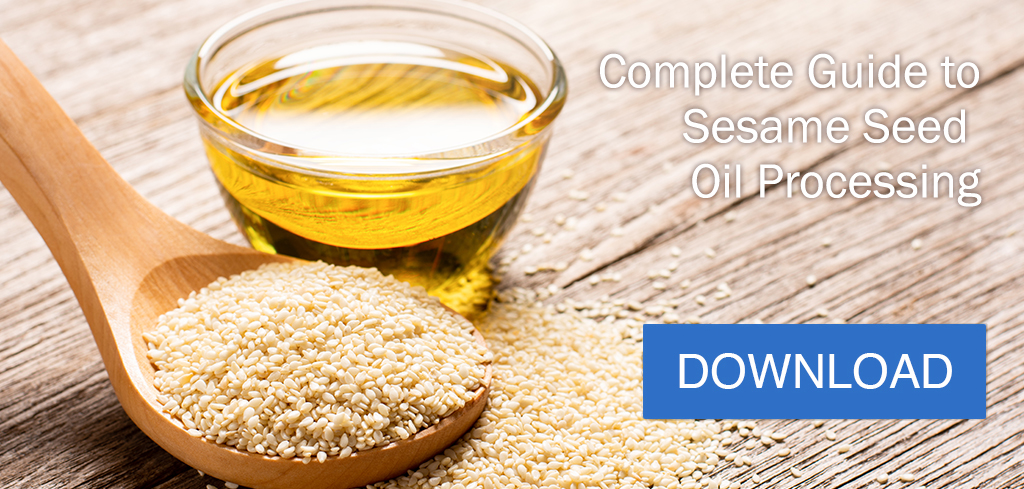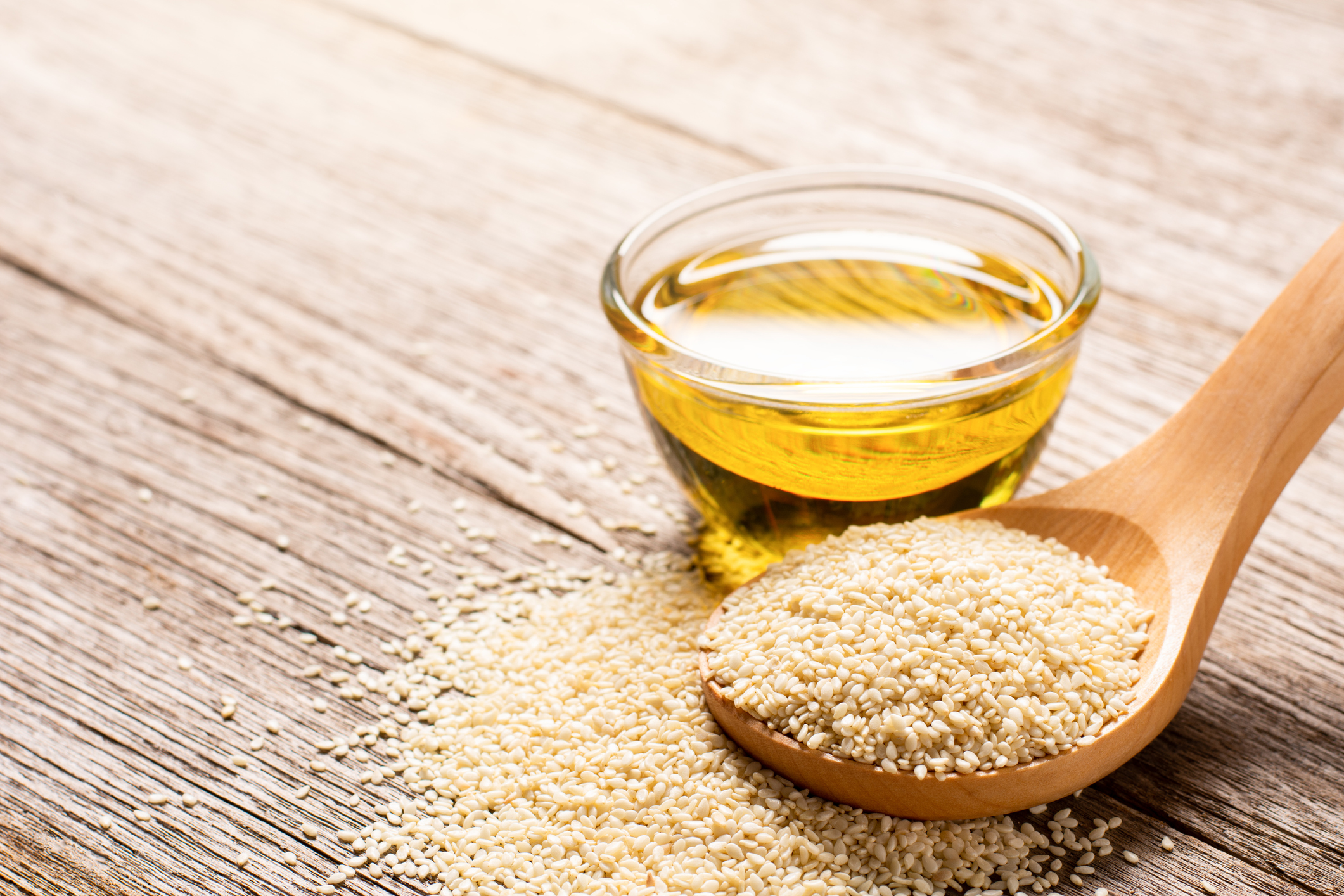
When Ali Baba commanded, “Open Sesame,” in the famous Arabian folk tale, a sealed cave full of treasure magically opened before him. Likewise, processors today can unlock a veritable treasure trove of profits by tapping into the potential of this tiny ancient seed to extract high-quality sesame seed oil.
One of the oldest cultivated oilseed crops in the world, sesame seeds contain a higher fat concentration than most other conventional oilseeds—up to 57% by weight compared to about 20% in soybeans. Sesame oil packs an unmistakable nutty flavor and other benefits that make it useful both as an edible oil and an important ingredient in other applications.
However, these seeds only comprise a small share of global vegetable oil production because of their historically labor-intensive harvesting practices and other processing challenges. By understanding how to press these small, oil-rich seeds more efficiently, processors can maximize the yields and profits of sesame seed oil.

Sesame production
Sesame (Sesamum indicum) has been cultivated for its oil-rich seeds for over 4,000 years, dating back to ancient Babylon. Known by many names throughout history—including til in India, sesamum in Greece, benni or benne in West Africa, and later gingilly or gingeli in Europe and goma in Japan—the seed we know today as sesame has long been used as a culinary ingredient and even a healing ointment.
Native to sub-Saharan Africa, sesame is a drought-tolerant plant that grows in hot, dry tropical and temperate climates. Africa and East Asia, where the seed and its oil have been part of the cuisine for centuries, lead the global sesame market. Countries like Sudan, Myanmar, Tanzania, India, and Nigeria lead the world in production—supplying more than 60% of the worldwide sesame supply, which totaled nearly 7 million tonnes in 2020.
U.S. sesame seed production is concentrated in southern states like Texas and Oklahoma. About 65% of the annual U.S. sesame crop (which totaled about 31 million pounds in 2017) is processed into sesame seed oil, and the other 35% goes directly into the food industry as whole seeds used to top off hamburger buns and other baked goods.
Sesame seeds form inside fruit capsules that contain between 50 to 80 seeds each. These pods naturally pop open when ripe to release the seeds inside—which may be where the phrase “Open Sesame” originated. Farmers traditionally had to harvest the entire plant manually and hang it upside down to collect the falling seeds. However, U.S. plant breeders have since developed cultivars that are less likely to drop their seeds, making mechanical harvest more effective.
Sesame seed oil extraction
After harvest, sesame seeds are cleaned and dehulled before heading to the oil mill for extraction. Like coffee beans, sesame seed oil can either be extracted from raw or roasted seeds, yielding two different byproducts with different applications.
- Raw (unroasted) sesame seeds yield a light-colored sesame seed oil with a neutral flavor profile ideal for high-heat cooking.
- Roasted sesame seeds yield a darker oil with rich nutty flavors and aromas. High heat can make roasted sesame seed oil taste burnt and bitter, so it’s often used as a condiment to flavor Asian dishes.
Raw sesame seeds undergo heat treatment before extraction to condition the material for more efficient pressing. Steam vessels are traditionally used to quickly cook raw seeds at about 180-200 degrees Fahrenheit for 5-8 minutes.
The residence time and temperature increase for toasted beans, which cook in a direct flame roaster at about 480 degrees for 20 minutes. This process activates the strong nutty flavors and aromas of roasted sesame seed oil.
Traditionally, processors ran sesame seeds through a screw press twice to squeeze out as much oil as possible since the first pressing only extracts about 30% of the oil. Unfortunately, this double pressing method doubles the time, energy costs, and equipment maintenance involved in extraction.
A more efficient alternative to processing specialty oilseeds like sesame is the Anderson Super Duo™ Series Expeller®. The Super Duo’s unique dual-press design crushes seeds twice in a single pass to achieve the lowest possible residual oil levels with the most efficient use of horsepower. Compared to running multiple machines or running material through the same press twice, the Super Duo saves valuable extraction time and cost to help processors maximize profits.
Also read: Pressure Leaf Filter vs. Decanter Centrifuge: Which Oil Filtration System is the Best?
Sesame seed oil applications
The oil content in sesame seeds ranges from 42-57% depending on the variety, crop management practices, and processing methods used. The oil is primarily unsaturated fat—with nearly equal portions of polyunsaturated fat (or linoleic acid), monounsaturated fat (or oleic acid), and a smaller amount of saturated fats (palmitic and stearic acids).
Sesame seed oil is one of the most stable edible oils, thanks to natural antioxidants that prolong its shelf life and protect against rancidity. This superior stability and strong flavor make sesame seed oil popular as a premium cooking oil. Additionally, its long shelf-life makes it a practical ingredient in shortenings, margarines, and salad dressings.
Antioxidants and other bioactive compounds lend many nutritional benefits to sesame seed oil beyond its distinctive taste. Although research is limited, these components may give sesame products anti-inflammatory, antimicrobial, and antioxidant properties that can help:
- Lower cholesterol and blood pressure.
- Protect against cancer and heart disease.
- Improve memory function.
- Reduce gingivitis and gum disease.
- Regulate blood glucose to manage diabetes.
Because of these health benefits, sesame seed oil also holds promise as a pharmaceutical and nutraceutical ingredient. For example, it’s often used as a carrier oil for injections and intravenous drip solutions. It’s also used in cosmetics and personal care products thanks to its moisturizing qualities and anti-aging properties.
However, sesame seeds and oil can cause allergic reactions in some people, including an estimated 1.5 million Americans. Until recently, only a fraction of U.S. food companies disclosed sesame ingredients on their product labels, putting people with severe allergies at risk. The Food Allergy Safety, Treatment, Education and Research (FASTER) Act finally became law in 2021, requiring that sesame be labeled on all packaged foods in the U.S. starting in 2023.
Sesame’s potential
Although sesame seed oil makes up a smaller market than other prominent oilseeds today, its enduring popularity through the ages makes it an essential staple in many parts of the world. As new research continues to uncover this ancient seed’s full nutritional and nutraceutical potential, sesame’s place in the oilseed market is set to grow.
From its 2022 market value of over $4 billion, the global sesame seed market is expected to exceed $7 billion by 2032. To tap into the seed’s growth opportunities, sesame processors must optimize their extraction methods and machines to efficiently press this tiny-but-mighty seed—unlocking premium prices for the resulting oil.
With decades of experience pressing specialty seeds like sesame, Anderson International can provide the equipment and the expertise to help processors turn profits from sesame seed oil extraction.
